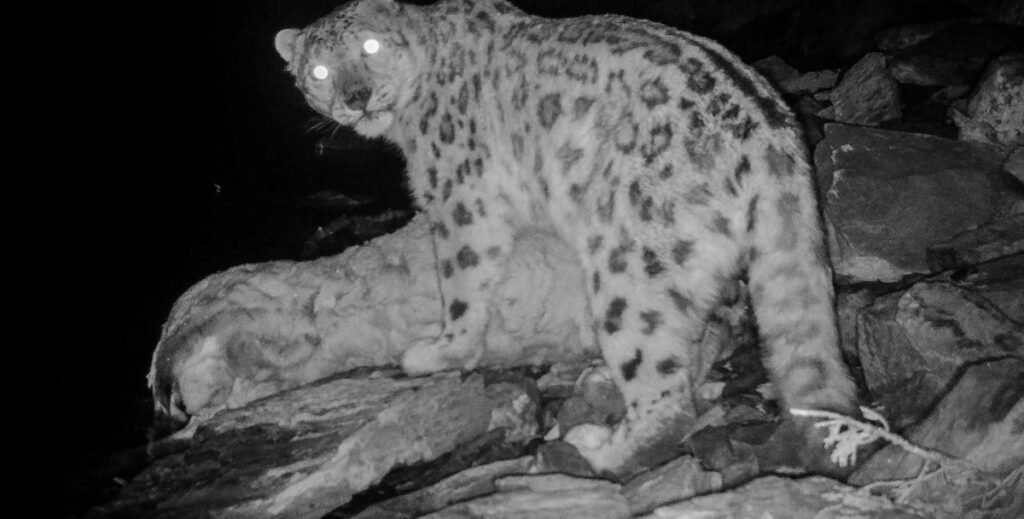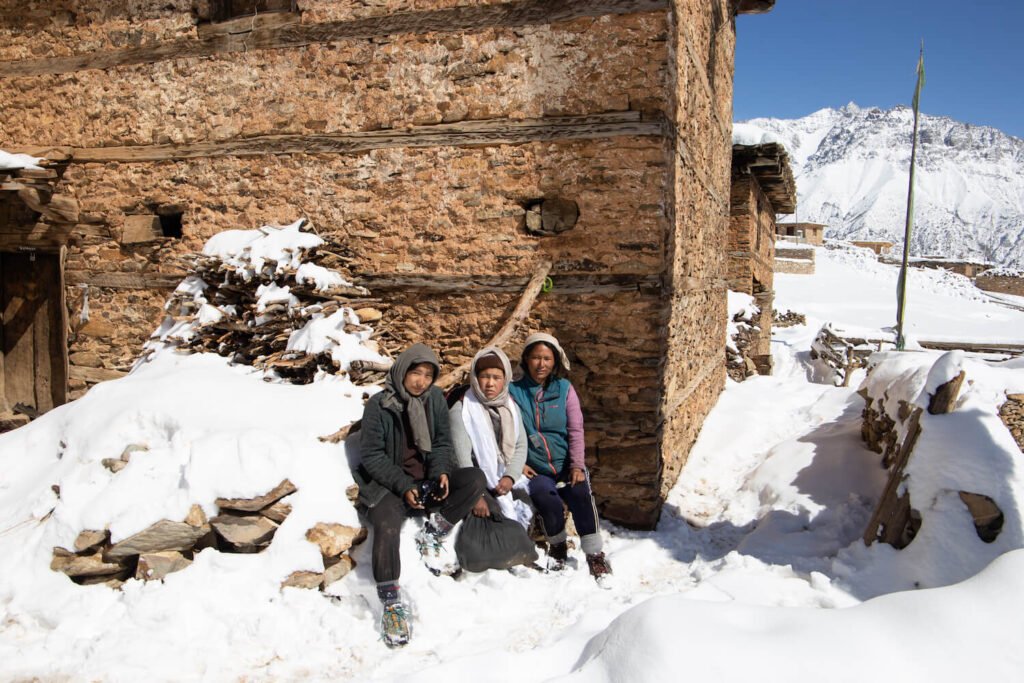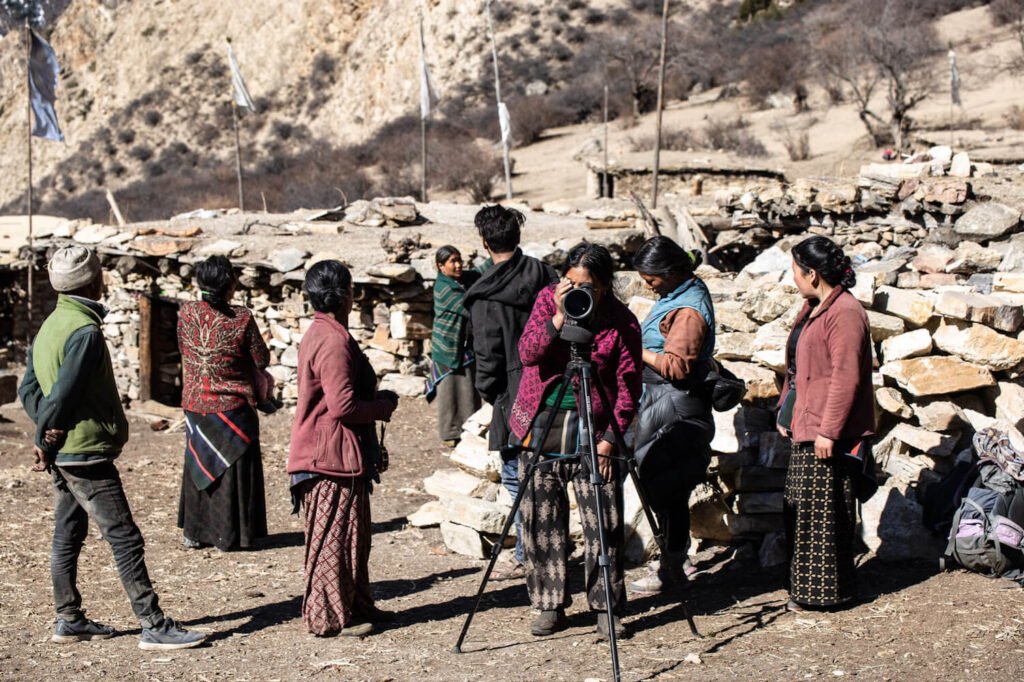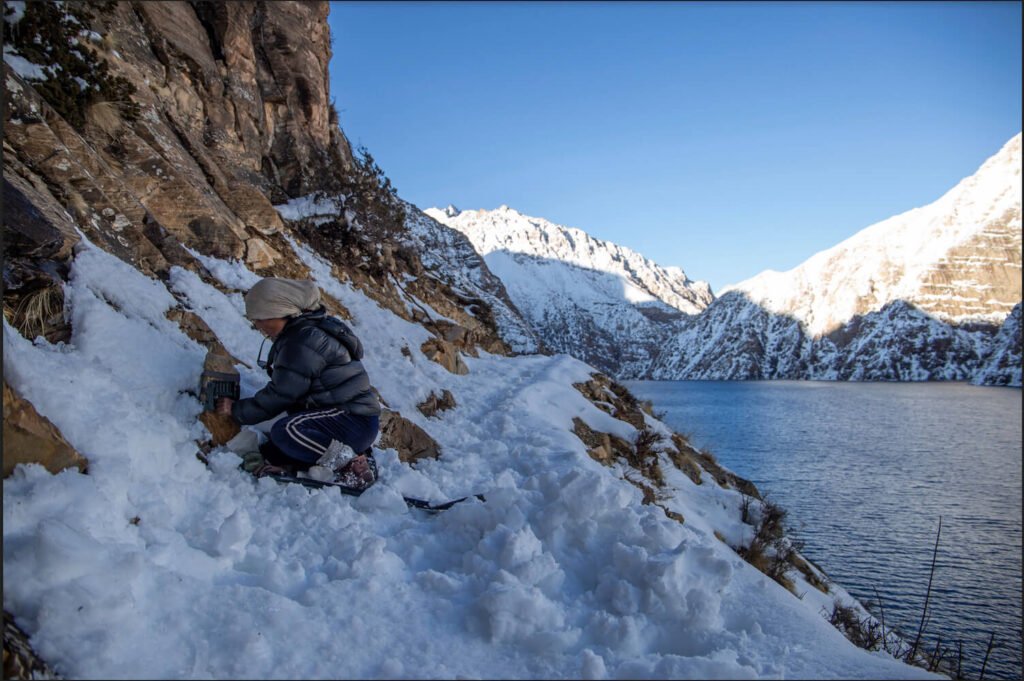Congratulations to filmmaker Sonam Choekyi Lama and snow leopard researcher and conservationist Tshiring Lhamu Lama for the success of their short documentary film “The Snow Leopard Calling” that won Best Documentary in the Panorama category in the Kathmandu International Mountain Film Festival (KIMFF).

Sisters Sonam and Tshiring, who grew up in Dolpo, a region of Western Nepal, are members of Snow Leopard Conservancy partner Mountain Spirit. Tshiring is also the founder of Snow Leopard Journeys, a trekking company whose main objectives are:

The all-women research team spent three winter months in early 2020 documenting the presence of snow leopards in the region, meeting with local herders to explain the ecological importance of this apex predator and how it brings balance to the mountain ecosystem, and planning for upcoming snow leopard treks after the Covid-19 pandemic has been resolved, which will create not only awareness but also economic opportunities for the local residents.

After witnessing the prevalence and severity of the local human-predator conflict, Tshiring, according to an article written by her sister for the Nepali Times, was “convinced that snow leopard conservation can only happen if the local communities are involved in protecting the animal.”


KIMFF describes the film that Sonam and Tshiring created to document their research as one that shines “a light on snow leopard conservation… The film was beautifully shot in the mountains of Dolpo during the winter time and provides an insight into the complexities around the issues of conservation. It is important and will resonate with viewers, not only in Nepal but internationally as well.”
All photos and video captures by Sonam Choekyi Lama & Tshiring Lhamu Lama
Source: https://snowleopardconservancy.org/2020/12/30/the-snow-leopard-calling/

Synopsis:
Disturbed by how herders trap and torture snow leopards, Tshiring, a young conservationist from the Dolpo Himalayas feels a sense of urgency to protect the last of these endangered big cats. She takes on a challenging research expedition over three winter months in an empty village, organizing a trek that could help change perceptions about the need to protect snow leopards.
For Tshiring, WWF Nepal’s young female researcher, the connection between the mountains, snow leopards and the Panda is almost innate. Born and raised in the quaint village of Tso, an arm’s length from the majestic Phoksundo Lake in Dolpa, Tshiring came to know of WWF very early on in her life. Back in 1996, it was the only organization, whose staff regularly traversed the mountains bringing solar power and improved cooking stoves to her village.
It was a few decades later that I found myself torn between accepting a National Geographic grant to study snow leopards and an opportunity to lead a snow leopard-based ecotourism project in my village. But then I got a call from WWF Nepal and my options changed altogether. It felt like I had found my calling.
A few months into her job, Tshiring led a maiden snow leopard monitoring expedition in the remote and daunting Upper Dolpa, retracing her origins in Nepal’s western snow leopard complex. But it wasn’t the terrain that concerned Tshiring.
The mountains were my playground and teacher. I understood the language of the seasons and the snow. I was only six years old when Shey Phoksundo National Park was established in Dolpa. And when they were building the park office, I carried sacks of sand with my mother for construction.
A key aspect of the monitoring expedition was working with the community to train them as local citizen scientists in using camera traps to study snow leopards. The citizen scientists were gathered in monasteries on two separate locations, only accessible on foot after a three-day walk. Getting there meant navigating twelve high mountain passes of elevations over 5,000m, with over 300kg of research equipment, supplies and a caravan of local citizen scientists, park game scouts, local porters and dzos (hybrid of a cow and yak). At one point, the previous night’s snowfall had completely blanketed one side of a mountain pass. Neck deep in snow, for Tshiring it was sheer instinct to throw caution to the icy wind while throwing sixteen duffel bags down the slope as the rest of the caravan came tumbling after; safe!
I was about seven when a group of tourists visited Phoksundo Lake. A year later, I received a letter from one of them sponsoring my education. There was no stopping since then and I earned my master’s degree in Natural Resources Management thanks to my sponsor Dr. Doug Ammons and WWF’s Chandra Gurung Memorial Scholarship. If it wasn’t for them, you would have probably found me in one of the tea-houses in Dolpa today.
Education is still a luxury for the people of Dolpa and the local Dolpo dialect is the most prevalent. During the expedition, Tshiring had a stack of camera trap operating guidelines in both English and Nepali; however, the functions on the cameras they operated only had an English option, yet the 24 citizen scientists that had to be trained understood only the local dialect! Faced with this predicament, Tshiring found a solution. New to camera traps herself, Tshiring first learned to operate them from her supervisors, Sheren and Samundra. Using her mobile phone, she then developed a visual step-by-step guide and shared this with the citizen scientists. For them, seeing was definitely believing, and within three days, each citizen scientist knew the rudiments of the monitoring tool.
Yartsagunbu, a mountain fungus, is the equivalent of gold for the people of Dolpa. I earned my first wage of Nepalese Rs. 67,000 from gathering and selling the fungus after finishing my tenth grade. With this money, I followed my dream all the way to Kathmandu and enrolled in a college.
The citizen scientists together with Tshiring and her supervisor, Sheren, installed two pairs of camera traps in 22 spots, over a period of 45 days in May and June. This time of year is also when locals harvest Yartsagunbu, and the mountain pastures are dotted with eager pickers; the chances of the camera traps being stolen were inherently high. By slowly getting the word out, one person at a time, the local people understood the importance of the camera traps. Only one camera was stolen during the entire expedition.
At the end of the expedition, nervousness was met with amazement as Tshiring sorted through the camera trap footage. Snow leopard images and videos were captured with more than half of the cameras installed, helping Tshiring and her team learn more about the snow leopards of Dolpa.
Dr. George B. Schaller, whom I’d joined on a Himalayan expedition in 2016, is probably the first person to present Dolpa’s snow leopards to the world in the 1970s. Four decades later, I feel humbled to continue this legacy with WWF in my journey of toil and gratitude, from a young child who walked in the footsteps of the ghost of the mountains to a learning conservationist raring to protect its future.
Tshiring and her team’s work in Dolpa provided an important baseline for WWF Nepal, to help scale conservation measures to protect the snow leopard and its prey base, enabling a harmonious existence between the people of Dolpa and nature in the lap of the Himalayas.